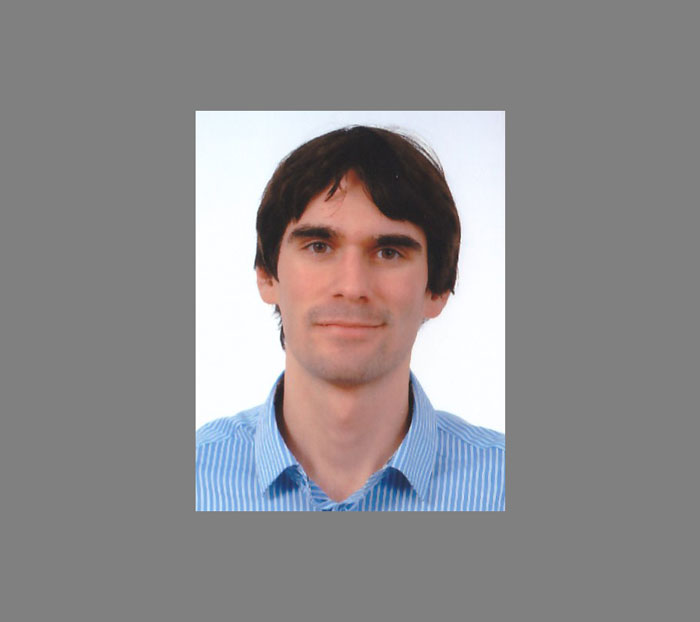Michal Hora is a Structural Engineer for di5 architects and civil engineers Ltd., a Prague civil engineering company.This week Michal spoke to BIMIreland.ie about using BIM and BIM adoption in the Czech Republic.
di5 architects and civil engineers Ltd is mostly known for successful attempts with BIM implementation on most of its projects. Michal’s work consists of making structural design checks and calculations as well as all documentation needed during whole construction cycle, starting from simple draft to accurate workshop plans and details. Michal studied at Czech Technical University (CTU) in Prague. His course of study was Structural Engineering. Michal graduated from the University three years ago and he is now studying on a doctoral degree programme.
You are an engineer and an academic with a portfolio of research projects. When did your interest in BIM begin?
My first attempts with BIM could be dated back to sometime in 2007-2008. I was a high-school student and had a part-time job as an architect’s assistant. I did some first steps in visualisations and working with 3-D planning. I have to admit, that I didn’t know what the abbreviation BIM stood for, and yet I had a strange feeling, that maybe this will be interesting in the future. However, my first real major BIM experience started at my current work where I have been working for two years now.
You have expertise in BIM in the Czech Republic. Could you please briefly describe the adoption of BIM in the Czech Republic and in Europe in general?
As far as I am concerned, I can just give some information about BIM in Czech Republic. In our company we try to be innovative and forward thinking.
I think that Czech Republic is behind Wester European states with BIM in terms of its implementing and development. However, this hold-up could be an advantage in some context. We can see the others’ mistakes beforehand, for instance.
What countries most influence the adoption of BIM in the Czech Republic?
I can only guess. We are not cooperating with other companies in Europe right now. I would name France and Germany.
Are you influenced by any specific consultant firms, research organisations or professional bodies?
We are trying to comply with requests of all of our clients. Our clients are usually big international companies of Czech developers as well as private investors. We listen to the specific needs of every project and it can be said that every project is in its own way unique. So we are influenced mainly by our experience and clients ideas.
What are the key challenges witnessed to the adoption of BIM in the Czech Republic?
Mainly it is the lack of information about BIM in the construction sector and by investors, and the fear of trying something new which is not yet common. Then there is also a lack of people who can use the software. This is connected with a lack of education support.
What challenges have you encountered in your work?
The most crucial one for me is the collaboration between the structural and architectural part of the project. In this case one can attack the very boundaries of software. It’s not easy, so far, to have only one model of the whole building, which suits for needs of every profession: structural engineer, architect, sanitary engineering, facility engineering….
What are the main topics discussed when talking about BIM in Prague and other central European cities?
The main topic is how to use BIM in order to get best results and use every possible advantage which BIM brings, and how to convey these advantages to investors.
Will BIM affect the professions and their boundaries, and the traditional statuses of those professions?
Of course it will. For example, bills of materials are much easier with BIM and also coordination between professions, since every profession is using BIM as well. There is already a new kind of occupation come into being – the BIM Coordinator. The one, who brings together BIM models of different professions (structural part, MEP, architects, landscaping…) and has to guarantee smooth cooperation among every profession.
Will BIM cross borders in terms of standardising the design / construction process?
It definitely will. Every company which uses BIM has to have its own standards in order to give a fundamental frame to its projects. Then every other company which collaborates with the already mentioned company have to obey those standards and add some of their own new standards. Eventually, there should be at a basic frame in standardizing but only on the level among collaborative companies. These standards can be changed in order to best suit an actual project.
One very futuristic idea is to give up all paper drawings and build only according to 3D documentation or by machines with 3D print technology.
What do you predict for the future of BIM education and research in the Czech Republic?
It will surely rise. As far as I know, Czech Technical University will start with BIM education on higher academic level courses (credit subject) very soon.
What software do you run and what technology do you use relating to your modelling?
We use Autodesk software, especially Revit. As a Structural Engineer, I use structural detailing for workshop drawings of steel reinforcement in concrete or detailed documentation of steel structures.
What documents should those interested in BIM, be reading?
According to the ones who actively use BIM software, I don’t think it’s about reading, especially from the very start. Just practise it, practised it, practised it… Then, after learning some basics, one can start with reading about experiences from others. It can be effectively done at conferences.
The contents of this site are subject to copyright laws and may not be reproduced in any form without the prior consent of the publishers. The views expressed in articles do not necessarily represent those of the publishers.
BIM Ireland




